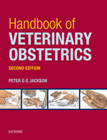|
|
|
| |
 |
|
|

|
 推薦指數:
推薦指數:





|
|
- 內容介紹
|
Handbook of Veterinary Obstetrics, 2nd Edition
By Peter G. G. Jackson, MA, DVM&S, FRCVS
320 pp., 100 ills., Copyright 2004
Softcover
ISBN:0702027405
Description
Comprehensive, practical, and easy-to-read, this unique handbook provides a clear guide to veterinary obstetrics in large and small domestic animals. A detailed description of normal birth helps readers immediately recognize abnormalities and provides a baseline against which dystocia and its treatment can be measured. The causes of dystocia encountered in each of the domestic species are described, with notes on some exotic species. Coverage also discusses the immediate care of the mother and offspring following delivery, as well as problems that occur post-parturition.
Key Features
Practical guidance is provided for managing obstetric cases.
Superb illustrations help readers understand problems and interventions.
Advice is provided on pre-natal care and the prevention of dystocia.
Common causes of dystocia are explained, species by species.
New to this Edition
Content has been thoroughly revised and updated — including new diagnostic techniques — to reflect the latest developments in veterinary obstetrics.
Thorough information is provided on the drugs used in veterinary obstetrics.
Greater detail has been added to information on dystocia in the ewe — including specific problems like ringwomb.
An additional discussion has been added to dystocia in the dog and cat on the treatment of prolonged gestation and the management of the newly recognized condition of partial or incomplete abortion.
Material has been added on the rabbit and the other less common species.
Information on post parturient problems in large and small animals now includes content on the treatment of conditions like fluid therapy in small ruminants and eclampsia in the bitch.
Discussions on the prevention of dystocia now address fetal monitoring and drug therapy for the induction of birth.
A number of new illustrations give greater clarity to the text and emphasis to species like the sheep.
Author Information
By Peter G. G. Jackson, MA, DVM&S, FRCVS, University of Cambridge, Cambridge, UK
|
|
|

